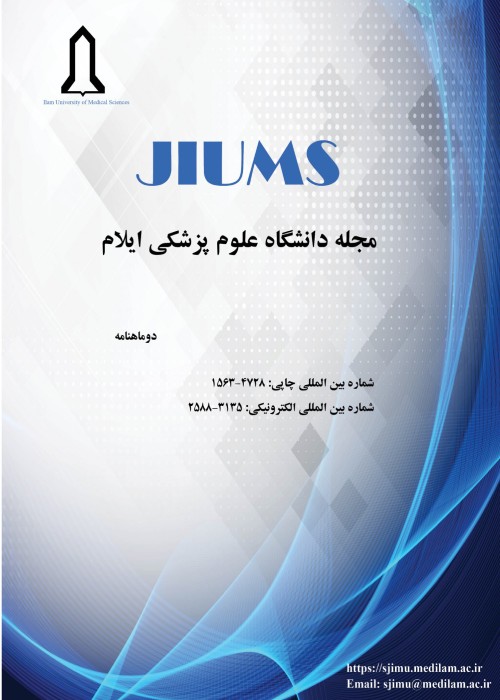Molecular Identification and Drug Susceptibility of Candida Species Isolated from the Skin of Patients with Acne Clinical Sings
Author(s):
Article Type:
Research/Original Article (دارای رتبه معتبر)
Abstract:
Introduction
Acne is a pathological disorder and a chronic inflammation in the sebaceous follicles, and one of the most popular dermatology damages that has affected millions of people worldwide. The aim of this study was to identify Candida species in patients with acne as well as determine the drug susceptibility of these species.Materials &
Methods
In this cross-sectional study, 70 clinical specimens were taken from the skin of patients suspected of acne by the sterile swab. Subsequently, the specimens were cultured on Sabouraud Dextrose Agar containing chloramphenicol. The plates were incubated for 48 h at 37˚C. The suspected colonies were investigated through microscopic examination and subsequent passages were evaluated according to standard operating procedures and specification of the type of colony color on CHROMagar for the isolation of the yeast. The sequencing method was utilized (ITS2, ITS4) to approve C.species. In addition, the susceptibility testing was performed to assess drug-resistant isolates C. species based on the clinical and laboratory standards institute method.Findings
In total, 11 C. species were identified and isolated that include 8 C.parapsilosis (72.73%), 1 C.krusei (12.5%), 1 C.lusitaniae (12.5%), 1 C.kefir (12.5%), and a Trichosporon asahi. According to the investigation of C. parapsilosis isolates susceptibility to various concentrations of the anti-fungal agents to isolates Cp1and Cp8, the isolated Cp5 with MIC 50 was equal to 32,0.5,0.25 and with MIC 90 of <64, <1, <0.5 μg/ml were resistant to fluconazole, itraconazole, and ketoconazole, respectively. Apart from the isolation of Cp1 and Cp8, which had relative resistance, almost all other species of C. parapsilosis isolates were susceptible to these drugs.Discussion &
Conclusions
Several studies showed that bacterial agents are involved in causing acne in most cases. According to the results of this study, it can be suggested that the yeast C. species can be introduced as an agent in the etiology of this disease. C. species isolates can also be resistant to antifungal drugs and this could be one of the causes of the treatment failures.Keywords:
Language:
Persian
Published:
Ilam University of Medical Science, Volume:27 Issue: 2, 2019
Pages:
123 to 134
magiran.com/p2004694
دانلود و مطالعه متن این مقاله با یکی از روشهای زیر امکان پذیر است:
اشتراک شخصی
با عضویت و پرداخت آنلاین حق اشتراک یکساله به مبلغ 1,390,000ريال میتوانید 70 عنوان مطلب دانلود کنید!
اشتراک سازمانی
به کتابخانه دانشگاه یا محل کار خود پیشنهاد کنید تا اشتراک سازمانی این پایگاه را برای دسترسی نامحدود همه کاربران به متن مطالب تهیه نمایند!
توجه!
- حق عضویت دریافتی صرف حمایت از نشریات عضو و نگهداری، تکمیل و توسعه مگیران میشود.
- پرداخت حق اشتراک و دانلود مقالات اجازه بازنشر آن در سایر رسانههای چاپی و دیجیتال را به کاربر نمیدهد.
دسترسی سراسری کاربران دانشگاه پیام نور!
اعضای هیئت علمی و دانشجویان دانشگاه پیام نور در سراسر کشور، در صورت ثبت نام با ایمیل دانشگاهی، تا پایان فروردین ماه 1403 به مقالات سایت دسترسی خواهند داشت!
In order to view content subscription is required
Personal subscription
Subscribe magiran.com for 70 € euros via PayPal and download 70 articles during a year.
Organization subscription
Please contact us to subscribe your university or library for unlimited access!


